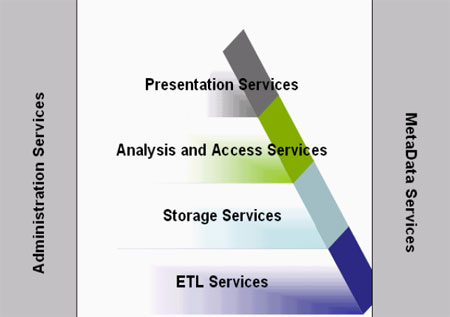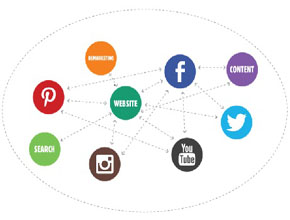What Is a Data Warehouse?
Since the beginning of movement toward data warehousing, data warehouses have been defined as being:
Subject-oriented : Data is organized around a major object or process of an organization. Classic examples include subject area databases for customer, material, vendor, and transaction.
Integrated : The data from various subject areas should be rationalized with one another.
Nonvolatile : Data in a data warehouse is not updated. Once a record is properly placed in the warehouse, it is not subject to change. This contrasts with a record of data in an online environment, which is indeed very much subject to change.
Time-variant :Arecord is accurate only as of some moment in time. In some cases the moment in time is a single moment. In other cases it is a span of time. But in any case, the values of data found in a data warehouse are accurate and relevant only to some moment in time.
Created for the purpose of management decisions.
The preceding definition has remained unchanged since the inception of the data warehouse.
In addition, the data warehouse provides:
- Detailed or granular data
- Integrated data
- Historical data
- Easy-access data
The data warehouse is at the center of the business intelligence environment. The data warehouse represents the single version of truth for the corporation and holds data at a granular level. In addition, the data warehouse contains a robust amount of historical data. And the elements of a data warehouse are as valid for SAP as for the non-SAP environment.
The data warehouse evolves from these requirements and supports the process of moving data from source systems, transforming, and cleansing the data so that it may be stored in an integrated data model at an atomic level of granularity. There are many factors that influence the design of a data warehouse and the structure that data records are stored. We discuss some of these factors in the next sections.
BW Overview
BW Information Model: Overview
BW information model is based on the core building block of InfoObjects which are used to describe business processes and information requirements. They provide basis for setting up complex information models in multiple languages, currencies, units of measure, hierarchy, etc.
The key elements in the BW information model are:
- DataSources
- InfoSources
- ODS Objects
- InfoCubes
- InfoProviders
- MultiProviders
Data Sources
DataSources are flat data structures containing data that logically belongs together. They are responsible for extracting and staging data from various source systems.
InfoSources
InfoSources are the group of InfoObjects that belong together from a business point of view. It contains the transactional data obtained from the transactions in online transactional processes (OLTP) and master data such as addresses of customers and organizations, which remain unchanged for longer time period.
ODS objects
An ODS object is a dataset which is formed as a result of merging data from one or more info sources. In it information is stored in the form of flat, transparent database tables that are used for preparing reports and quality assurance purposes.
InfoCubes
InfoCubes are multidimensional data storage containers for reporting and analysis of data. They consist of keys figures and characteristics of which latter is organized as dimensions facilitating users to analyze data from various business perspectives such as geographical area or types of sales channel.
InfoProviders
InfoProviders refer to all the data objects that are present in the SAP BW systems. These include all the data targets viz. InfoCubes, ODS objects and master data tables along with Info sets, remote Infocubes and MultiProviders.
MultiProviders
MultiProvider is a virtual information provider which is a combination of any two physical or virtual info providers. MultiProviders do not contain any data and are used to combine data from different info providers. Their main purpose is to make this data accessible for reports and analysis.
BW Architecture
Building SAP BW into multi-tier architecture model in Business Services
Being implemented on top of SAP Web Application Services SAP’s BW provides a multi-tier architecture (figure shown below), along with a complete software development environment, system management tools and additional functionalities such as currency conversion or security. Although it is closely related to SAP R/3, SAP BW is a completely separate software package which comes with automated extraction and loading facilities.
Components of BW architecture
SAP BW is based on integrated metadata concept with metadata being managed by metadata services.
SAP’s BW has following layers:
- Extraction, Loading and Transformation (ELT) services layer.
- Storage services layer, with services for storing and archiving information.
- Analysis and access services layer, which provides access to the information stored in SAP BW.
- Presentation services layer, which offers different options for presenting information to end users.
- Administration services.
- Metadata services.
Figure: Multi-tier Architectural Pattern










